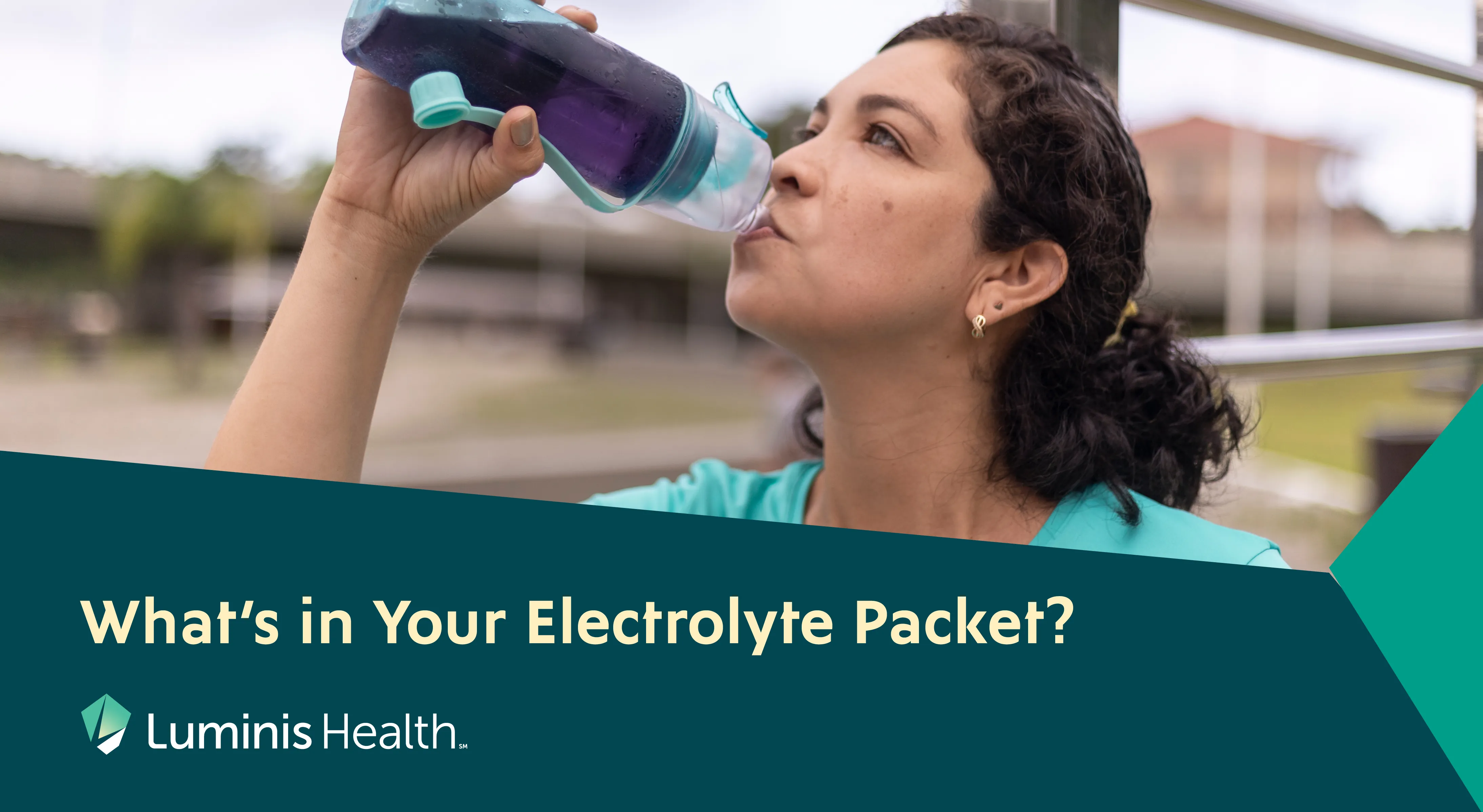You’ve probably seen them at the gym, on social media or tucked in a friend’s purse — little packets promising hydration and energy. Electrolyte packets are everywhere these days, but what is in them, and do you really need them? Let’s break it down.
What is an electrolyte?
Electrolytes are minerals that help your body function properly. They carry an electric charge (hence the name electrolytes) and are essential for many body functions, like:
- Keeping your heart rhythm steady
- Maintaining fluid balance
- Supporting nerve and muscle function
What ingredients are in electrolyte packets?
Most electrolyte packets contain a blend of the following ingredients:
- Calcium, which is important for bones, muscles and nerves
- Flavors or colors, which are added for taste and appearance
- Magnesium, which helps with muscle relaxation and energy production
- Potassium, which supports muscle and heart function
- Sodium, which helps your body retain fluid and supports nerve function
- Sugar or sweeteners, which are added for taste or as a quick source of energy
Some packets also contain B vitamins that support energy metabolism. But not all packets are created equal; some contain large amounts of sugar, while others use sugar-free alternatives. Be sure to read the label.
Why do sugar and sodium levels matter?
While a little sugar can help your body absorb electrolytes faster, too much can do more harm than good. Unless you're exercising for more than an hour or in extreme heat, you probably don’t need added sugar.
Sodium is vital for hydration, but too much can be a concern. The sodium in electrolyte drinks is designed to replace sodium lost through sweat. If you haven’t lost a lot of sodium, this extra sodium isn’t good for you. Many electrolyte packets are designed for endurance athletes and have more sodium than the average person needs.
To make sure you aren’t going overboard on sugar or salt, look for products that:
- Contain around 100-150 mg of sodium per 8-oz. serving
- Don’t have artificial colors or unnecessary fillers
- Have no more than 6g of sugar per 8-oz. serving
If you have special sodium restrictions, you should consider how electrolyte packets fit into your diet and if you should use them at all. Keeping a food diary, like this one from the American Heart Association, that tracks sodium is an easy way to see how much you’re consuming each day.
When is the best time to use electrolyte packets?
They’re not just for professional athletes. You may benefit from added electrolytes if you:
- Exercise for more than an hour, especially in the heat
- Are recovering from fluid losses due to vomiting or diarrhea
- Follow a low-carb or keto diet
- Sweat heavily during workouts
In any of these situations, use electrolyte packets by mixing according to the package instructions and sipping the solution over the course of 30-60 minutes.
Why not just drink water?
Water is great for daily hydration, but it doesn’t replace minerals lost through sweat or illness. Electrolyte drinks give your body a faster way to recover and stay balanced. Compared to plain water, they can help prevent muscle cramps, hydrate you faster and support energy and focus.
The bottom line
Electrolyte packets can be a useful tool for staying hydrated, especially during intense activity, illness or extreme temperatures. But be sure to check the label for sugar and sodium content, so you can select a product that’s right for you.
Need help picking the right one? A Luminis Health registered dietitian can help you find the best electrolyte products for your needs and lifestyle.




